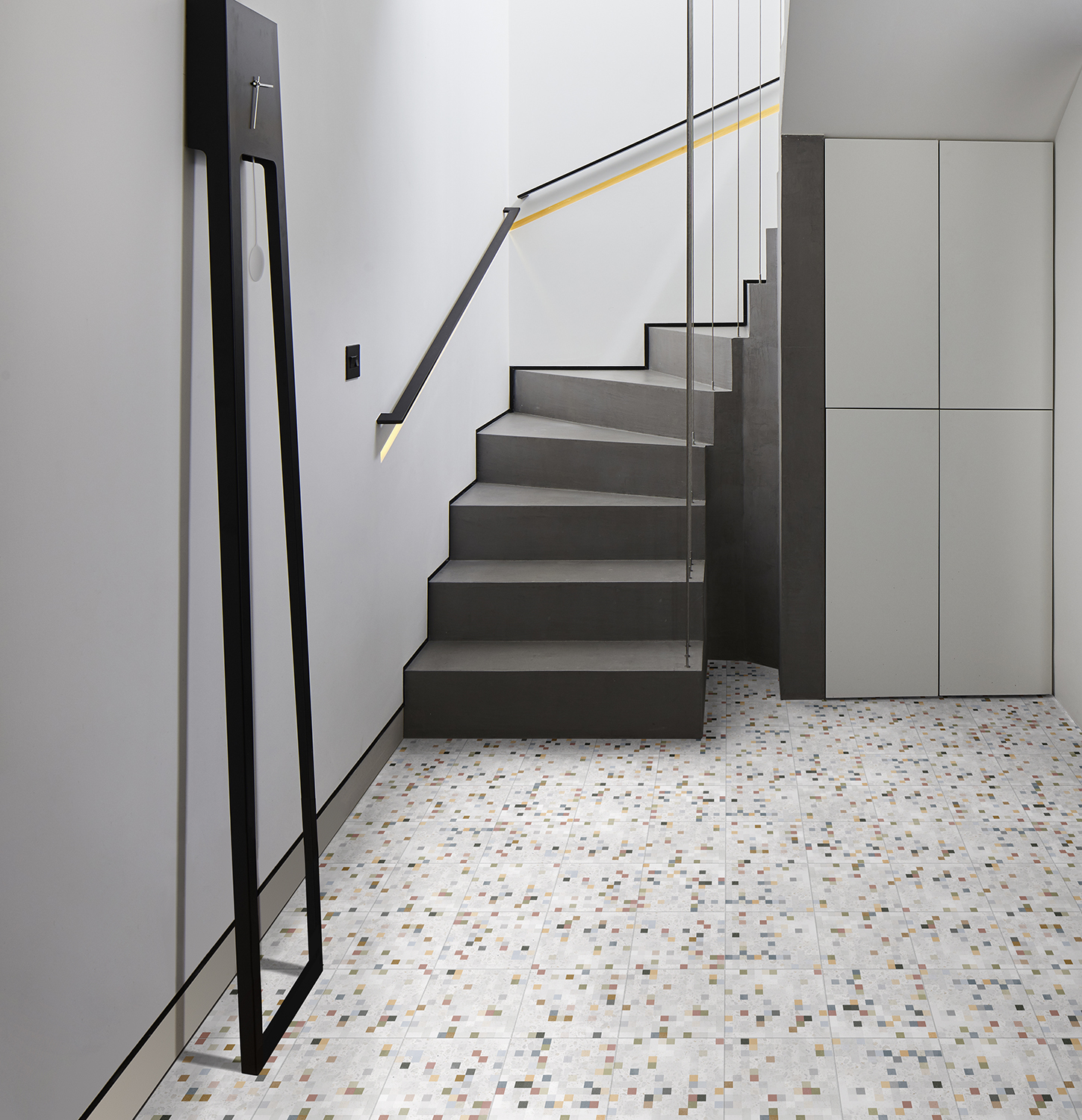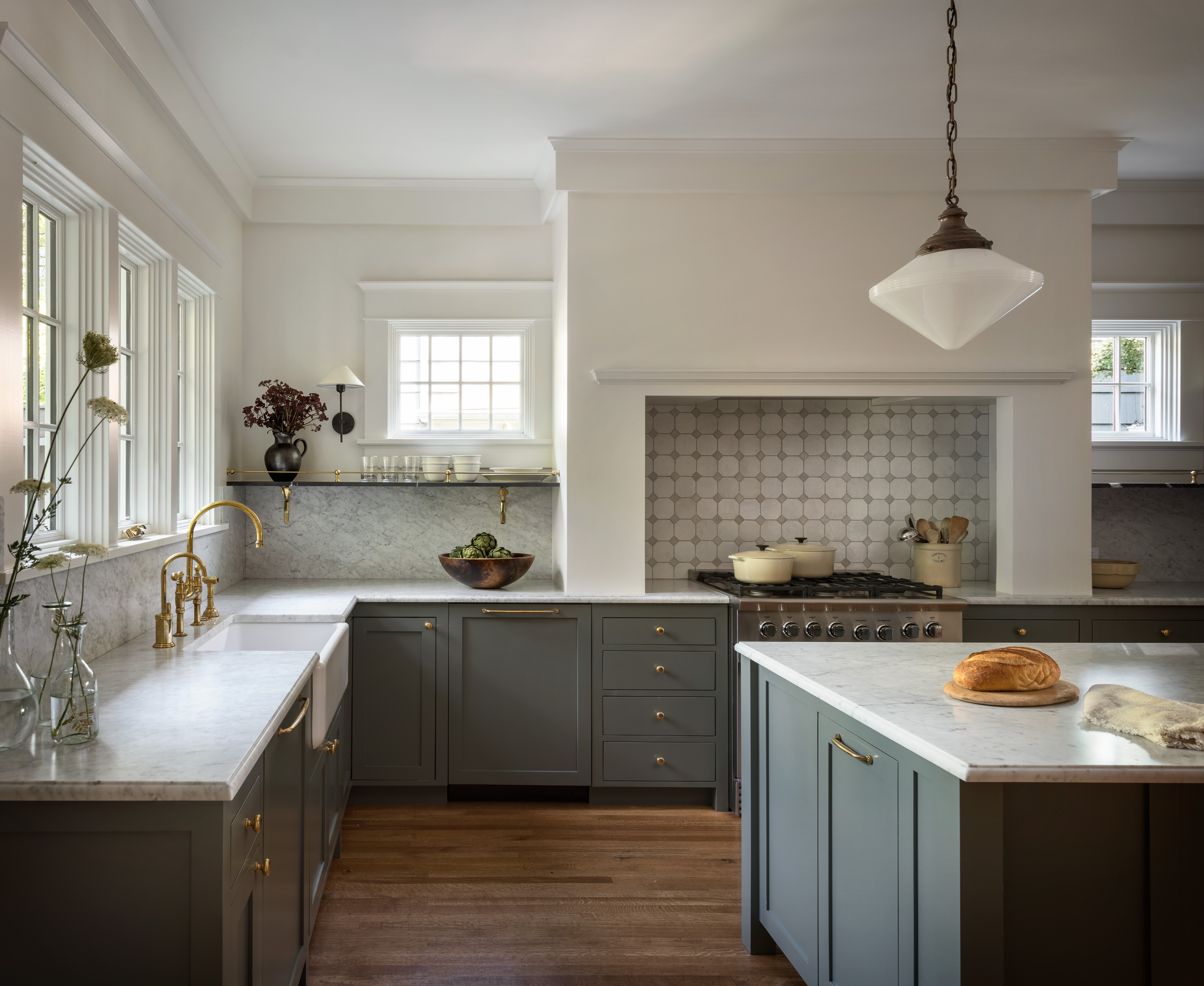Underfloor heating systems explained
Underfloor heating is the go-to for contemporary open-plan living spaces and bathrooms, and design experts explain why


Underfloor heating has become the go-to when it comes to smart homes recently. With the increase in open-plan spaces, more and more people are choosing it as it means no radiators on the walls to spoil a clean, modern look. It also means not having to worry about where to place windows and doors if you are extending or remodeling.
When considering types of heating, and if underfloor heating is for you, think about your lifestyle and how you use your home. Are you mainly in the kitchen or living room? Are you out all day and come in late after work, or work from home? This will impact on whether it’s worth installing, and which room you put it in. In a large space, you can also ‘zone’ different areas which you could control independently from each other with two separate thermostats, like an open-plan kitchen-diner for example.
The bathroom is the most popular spot for underfloor heating, warming up the floor before you have a shower. Set up a timer so it reaches the correct temperature before the morning rush.
‘Underfloor heating is a good alternative to radiators especially in extensions or with a re-model,' Steve Birch of Vogue Radiators explains. 'It is versatile and can be used in any room, of any size, as a primary source of heating or as additional heating.’
The good news is that most homes are suitable for underfloor heating. Obviously, it’s easier to install in a new-build but it can be retro-fitted. Just bear in mind it will mean upheaval and mess, and take into consideration that the floor height may need to be raised which will affect the door and ceiling height. And the existing floor will need to be taken up, which will add to labor costs.
If it’s an old house and not well insulated, you may need a bigger system, or one with a higher wattage, which will cost more. Or you may need radiators as well as underfloor heating.
You don’t generally need planning permission to fit underfloor heating.
Underfloor heating - what are the different types?
There are two main types of underfloor heating - water and electric. Electric is the most popular with 65% of people opting for it, while 35% choose a water system.
The Livingetc newsletters are your inside source for what’s shaping interiors now - and what’s next. Discover trend forecasts, smart style ideas, and curated shopping inspiration that brings design to life. Subscribe today and stay ahead of the curve.
According to a recent survey, when it comes to underfloor heating:
55% of people have it installed in their bathroom
46% as part of their modern kitchen ideas
26% in their living room
24% in the hallway

How does an electric underfloor heating system work?
Electric underfloor heating works by laying strips of electrical matting, a bit like an electric blanket, across a subfloor which is then linked to an electrical circuit and thermostat. As the current passes through the wire, it becomes hot and the surface of the floor is heated as well. It is usually used under stone and ceramic tiles or concrete. With these mat systems, you can have pieces cut to size to fit awkward areas or to confine the heat to areas where you usually walk, in a bathroom for example.

How does a water underfloor heating system work?
Water-based underfloor heating consists of a series of pipes in a looped pattern on the floor that are connected to a boiler. Then warm water from the boiler circulates through the pipes to heat the floor. These systems can also be linked up to solar energy or an air source heat pump.
What Are The Advantages of an electric underfloor heating system?
The advantages of an electric underfloor heating system are:
1) Electric underfloor heating tends to be cheaper to fit than a water system.
2) The system can retain heat for a long time even after the power has been turned off.
3) It can help reduce overall heating costs – your HVAC or space heaters do not have to work as hard to heat up a room.
4) There is no need for radiators, which frees up wall space and offers more varied design opportunities
5) It can be installed by a competent DIYer.
What Are The Disadvantages of an electric underfloor heating system?
The disadvantages of an electric underfloor heating system are:
1) Underfloor heating can be expensive to run. ‘The most obvious disadvantage is the cost associated with installation,' says Chris Harvey of Stelrad Radiators. 'Whilst you will make savings on your bills in the long run because underfloor heating is more energy-efficient, the considerable upfront cost may take a long time to earn back’
2) The systems are relatively slow to heat up and to adjust, but this could be improved with a smart thermostat that can be programmed to come on before you need it and to turn off again.
3) These systems can be difficult and expensive to retro-fit as the existing floor covering has to be removed and the floor leveled.
4) For whole home use, electrical systems are more expensive to operate than warm-water radiant heating.
5) Electric underfloor heating systems are less effective under carpet, hardwood, or vinyl since heat can be trapped between the insulating surface layer and subfloor.
What Are The Advantages of Water Underfloor Heating?
The advantages of a water underfloor heating system are:
1) Underfloor heating has one obvious benefit – it is space-saving. ‘As it is installed under your floor, you don’t need radiators which frees up wall space and gives more flexibility in terms of home decoration,' Keith Bastian of Fischer Future Heat says. 'As these systems radiate heat from the ground up, they also provide a greater sense of warmth and comfort overall.'
2) Water underfloor heating systems are cheaper to run and energy-efficient, when combined with a boiler system
3) It heats up more quickly and creates a comfortable, even heat.
4) It could be linked up to a solar energy system or heat pump in the future

What Are The Disadvantages of Water Underfloor Heating?
The advantages of a water underfloor heating system are:
1) In order to fit a water underfloor heating system, the floor needs to be insulated to a minimum of 125mm which inevitably means raising the floor which often leads to disruptive construction work.
2) It is more difficult and expensive to install than an electric system
3) You will need a professional to fit it.
4) Boiler-based systems cannot be combined with air conditioning
How Much Does Underfloor Heating Cost?
Electric Underfloor heating is cheaper to buy and have installed. You can install some types yourself, but you will need a qualified electrician to connect it. It will cost in the region of $1100/£800 to install an electric system and between up to $5500/£4000 for a water system. For running costs, a 10m2 room will cost on average $300/£224 a year to run with an electric system and $60/£45 a year with a water system.
Does underfloor heating go wrong?
Underfloor heating can go wrong and is quite difficult to put right whichever system you have. Broken wires or a leaking pipe are encased in concrete and hidden under the floor so it can be difficult to locate the problem without taking the flooring up.
However, Keith Bastian says ‘Generally, once installed correctly, very little can go wrong with an underfloor heating system.’
What sort of underfloor heating is best?
The best and most efficient method of underfloor heating is a system powered by a heat pump or an electric boiler. Andy Kerr, founder of smart home systems installer, Boxt says ‘Heat Pumps are ideal with underfloor heating as they work at low temperatures for longer periods of time.’

Alison Davidson is well-respected British interiors journalist, who has been the Homes Editor of Woman and Home magazine, and the Interiors Editor for House Beautiful. She regularly contributes to Livingetc, and many other titles, and often writes about kitchens, extensions, and decor ideas. She is the go-to for information about green energy, sustainable home improvement and eco design ideas.